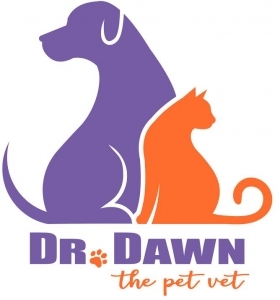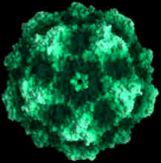
You have likely heard about the recent outbreaks of parvovirus, that has been killing dogs in many urban areas. What is important to know is that this is not a new virus. It has been around for decades and there is a vaccine for it. This is an example of a disease that can and will spread in densely populated areas, where unvaccinated dogs are at risk. This is one of those diseases that I find myself explaining about when people ask me “Do we really need to vaccinate our dog for this?”, and “My breeder says that veterinarians are over vaccinating dogs just to make money, and says that I shouldn’t”, and “My dog is older, so does he really need to get vaccines anymore”. This is precisely the situation that vets have been trying to avoid, because if your dog is going out where other dogs have been that carry this highly contagious disease, or you have carried it into the house on your shoes accidentally, then your dog is at risk.
Over the past several months, veterinarians in Trenton,NJ, and in the area that I personally practice, have seen dozens of dogs die from this highly contagious disease. It became so serious that they organized a free parvovirus vaccination clinic this Saturday. It spreads easily, is often fatal, and is not easy to clean up. I thought it time to talk about it, so that you could make sure that you are educated and are able to prevent it in your household.
What is Parvo?
Parvoviruses are a large group. Almost every mammal species, including humans,seems to have its own parvovirus, that affects its own species. So, the canine parvovirus will affect most members of the dog family (wolves, coyotes, foxes, etc.) You cannot get it from your dog.
It is a small virus in size, but is especially effective at infecting rapidly dividing host cells such as those in the intestines, bone marrow, lymph system and fetal cells. They are not “enveloped”, making them very hardy in the environment. It is a relative newcomer, having been discovered in 1967. It is considered to be ubiquitous, meaning it is present in every environment, unless regular disinfection is applied. In 1978, there was an epidemic, resulting in the virus mutating from one form to another. Eventually it’s spread became somewhat under control, once a canine vaccine became available. Currently available vaccines cover all variants of the virus out there today.
Whether or not infection happens depends on the interaction of 3 factors: host viability (including immune experience/vaccination status), virulence of the virus (how potent and likely to infect and number of particles exposed to), and environmental factors (stress, dry environments reduce the number of particles…)
The virus is hard to disinfect, and is shed in extremely large numbers by infected dogs. This means that it can be everywhere: carpet, on every floor, in every yard and park), carried along on dog fur, skin, etc.. It is shed in the stool for the first two weeks or less after the initial infection, but only a tiny portion of infected stool is needed to infect a non-immune dog. This ability to still infect could last for months, depending on the environmental temperature. Some dogs are carriers, and do not appear sick, yet still spread the disease.
Why mainly puppies?
Inexperienced immune systems, plus the number of particles infected, seem to be the biggest factor in whether an animal that is exposed gets sick. When the virus was new, all dogs, young and old, were at risk. Now that the virus is everywhere, all dogs, even the unvaccinated ones, have at least some immunological “experience” with the virus, which generates some antibodies that help protect. So, the answer seems to be yes, that older dogs are less likely to become ill. BUT, it is important to realize that this observation should not be interpreted to mean that adult dogs should no longer be vaccinated. They are still at some risk.
Natural protection?
When puppies are born they are completely unable to make antibodies against infections. But, nature has made it that they acquire some protection, in the form of protective antibodies, from their mother’s milk in the first few days after birth. The problem is that they wear off by 4 months of age, and those that get less colostrum (antibody rich milk), those that nurse less, or those that get none at all are at more risk. Thus, we recommend that puppies be restricted from public outdoor areas until their vaccination series is completed at 4 months, for this disease, and others they are vaccinated for at this age. There are windows of time between when the protection from their mother wears off, and yet their new immunity has not yet become protective, during which they are at risk.
Incubation
There is a 3-7 day period between when a puppy has been infected and becomes clinically ill. The virus seeks out rapidly dividing cells, going to lymph nodes, bone marrow and blood, and then the gastrointestinal tract, which results in vomiting and diarrhea. It leads to extreme fluid loss and dehydration, and the loss of the protective intestinal barrier, allowing bacterial invasion of, potentially, the whole body. To survive, they must make enough antibodies to fight the infection in time to prevent it from compromising the body and resulting in death. Antibodies are typically not made in time in young immune systems.
Hospitalization is required, with aggressive treatment. This is not something you can address at home. Fluids, antibiotics, blood monitoring, anti nausea medication, etc., are required, in addition to other, newer treatments, such as transfusions, that have been developed. Your vet would explain if indicated.
Prevention/Vaccination options:
The biggest problem in protecting puppies ironically stems from the natural mechanism of protection that has evolved. The natural antibodies they receive from their mothers will inactivate vaccines. That is because vaccines are solutions of inactivated viruses, either live and weakened (attenuated or modified) or killed. When injected into the puppy, IF there is still adequate maternal antibody present, the vaccine virus will be destroyed as if it were a real infection. There is about a week period of time when there is not enough maternal antibody to protect the puppy,but too much to allow a vaccine to work. This time is called the window of vulnerability. After this period, vaccines can be effective.
The next problem is that the age at which vaccine can be effective is different for each individual puppy. To get around this, we vaccinate puppies in a series, every 2-4 weeks until 16 weeks of age. By then we can be certain that the mother’s antibodies have waned and the vaccines should be able to take. Some puppies must be vaccinated until 20 weeks of age. This is in the case of pups from well vaccinated mothers. If your vet recommends this, this is the reason.
Remember:
After a puppy is born, maternal antibody levels drop by half approx. every 10 days.
Puppies born first or nursed more aggressively on the first day will get more antibody.
Mother dogs vaccinated near the time of breeding will have the highest antibody levels to pass on.
The more maternal antibody a puppy has, the less likely a vaccine is to work and the longer one must wait for antibody to wane and thus, for vaccination to be effective.
Live or killed vaccine?
Killed vaccine is the least effective at penetrating the mother’s maternal antibody. Live vaccine is typically recommended, unless there is a real question about the immunocompetence of the dog benign vaccinated, and the dog is an adult. Killed vaccines are not generally used on puppies.
Adults are now generally being switched to an every 3 year regimen. This is still being implemented into many practices. This is only for adults that had the full puppy series, and a booster as an adult.
Vaccine titers:
These are blood tests that measure the antibody level in a dog. It is a controversial subject, as many veterinarians do not feel that a certain level of antibody correlates with protection. Thus, many feel that titers are not useful. There is no single, universally accepted answer at this time. Still, if your dog has experienced severe reactions in the past, titers can come in useful to give you an idea if there are, at least, high levels of protective antibodies. Yet, the immune system is complex, and vaccination has proven to be the most effective way to prevent infection.
Dr. Dawn
Please share and subscribe here






